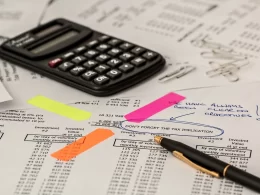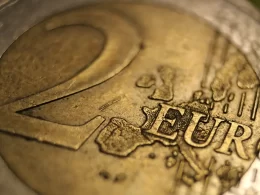The Anti-Inflation Shield was introduced by the government at the end of 2021, as part of the fight against rampant inflation. Its main features included a reduction in VAT and fuel excise taxes, as well as a widely announced shield allowance. A few weeks after its announcement, the head of government announced the implementation of a second shielding package, which introduced, among other things, zero VAT on food and zero VAT on gas.
So let’s take a closer look at what tax changes (and more) result from the Anti-Inflation Shield 1.0 and what the Anti-Inflation Shield 2.0, which is designed to, among other things, complement the previous shield package with new measures, brings.
Anti-inflation shield 1.0
The Anti-Inflation Shield was announced by Prime Minister Mateusz Morawiecki in late November. It was at that time that terms such as the shield allowance and zero VAT on food, which, admittedly, was missing from the first version of the shield, first appeared, but it appears in the Anti-Inflation Shield 2.0, about which in a moment.
The main assumptions of the anti-inflation shield in the tax aspect included:
- Reducing fuel prices as of December 20 for a period of five months, by reducing excise taxes to the minimum level possible in the European Union, as well as exempting companies trading in fuels from retail sales tax.
- Reducing VAT on electricity from 23 percent to 5 percent from January to March 2022.
- Reducing VAT for natural gas also from 23 percent to 8 percent and also from January 2022 to March 2022.
- Abolishing excise taxes on electricity.
Introduction of a shield allowance
The Anti-Inflation Shield 1.0 also introduced a shield allowance, which was promoted quite heavily by the ruling party. The one-time benefit of 400 to more than 1,400 zlotys is mainly addressed to the poorest, but ultimately more than 6 million households are expected to benefit.
According to information provided by the Ministry of Climate and Environment, the shielding allowance is to be paid in two tranches, the first of which will reach families by March 31 at the most, and the second by December 31, 2022. The amount of the shield allowance depends on the number of people in the household, as well as what the house or apartment is heated with. Local authorities are to take care of accepting applications, processing them, and ultimately paying the benefit. In turn, applications can be submitted electronically, as well as in paper form. For more on the shielding allowance, see this post.
In addition to this, the anti-inflation shield 1.0 also includes provisions showing savings in the public administration, consisting, among other things, in the absence of new job creation in the state sector on a one-to-one basis. The total cost of the Anti-Inflation Shield 1.0 is expected to be about 10 billion zlotys, and the mechanisms contained in it are expected to reduce inflation by 1-1.5 percent.
Currently, however, inflation is gliding, and according to economists, its peak near 10 percent year-on-year is not expected until April. Prime Minister Morawiecki, meanwhile, explains that inflation is mainly due to the actions of the European Union and Russia’s Gazprom.
Anti-inflation shield 2.0
The Anti-Inflation Shield2.0 came just a few weeks later, forced directly by the dismal data on price increases in the final weeks of 2021. Recall at this point that according to the latest reading of the Central Statistical Office, inflation in December 2021 was already 8.6 percent. Analysts and economists, on the other hand, estimate that its peak will not occur until April 2022, and we can expect increases of up to 9.5 percent.
According to the information shared at the press conference by the head of the government, the anti-inflation shield 2.0 will cover:
- A reduction in VAT on fuel from 23 to 8 percent, which is expected to reduce prices at gas stations by an average of 60-70 cents per liter of fuel.
- Reduction of VAT on food to 0 percent. It is worth noting that this refers to those food products that are currently subject to a 5 percent tax.
- Reduction of VAT on gas to 0 percent.
- A reduction in the tax on fertilizers to 0 percent, the amount of which is also affected by the price of gas, among other things.
- Reduction of VAT on electricity and heat to 5 percent.
Significantly, the zero VAT on food was decided by the government without waiting for approval from the European Commission. It is worth recalling at this point that during the first version of the shield, the prime minister argued that the European Union had not agreed to lower VAT on food, but it turned out in the end that Poland never requested it.
When does the anti-inflation shield 2.0 come into effect?
The Anti-Inflation Shield 2.0 goes into effect on February 1, and the solutions contained therein are expected to last for six months. As announced by both the head of government and ruling party politicians, the tax solutions will be extended for additional months if necessary. However, everything depends on what inflationary readings we will face in the middle of the year.
The Prime Minister’s Office, meanwhile, argues that thanks to the anti-inflation shield, Poles are expected to gain about 15 billion zlotys, which is also a cost to the state budget.
For more on the anti-inflation shield and inflation in Poland, visit okbr.pl




